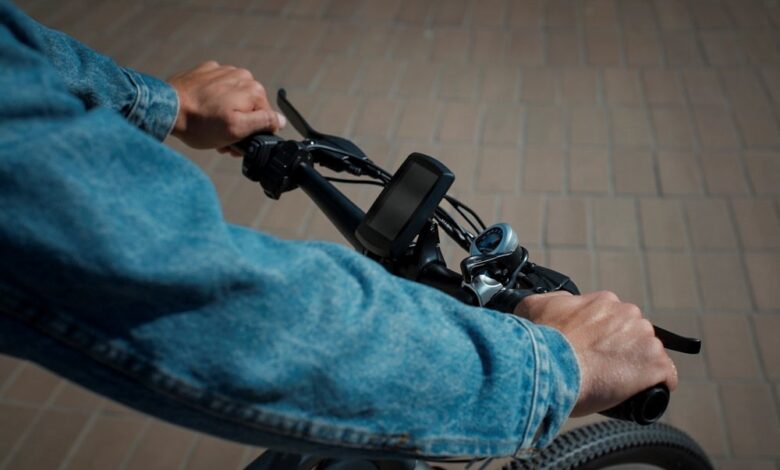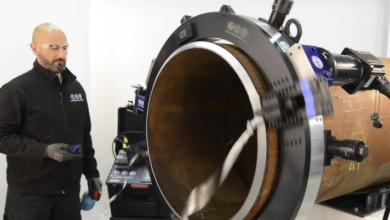eBike Powerhouse: How Fast Can a 750 Watt eBike Go?

Electric bikes, or eBikes, have surged in popularity as a versatile means of transportation, blending the physical benefits of cycling with the added boost of electric power. Among the various models available, the 750 watt eBike stands out due to its robust performance, striking a balance between speed and efficiency. This power level caters to both everyday commuters and adventure seekers, offering significant speed without sacrificing control. This article explores the capabilities of a 750 watt eBike, especially focusing on its speed potential and how it compares to other eBikes with different power settings.
Contents
- 1 1. Understanding eBike Wattage
- 2 2. Theoretical Speed Limits
- 3 3. Real-World Speed Factors
- 4 4. Comparing 750 Watt to Other Wattages
- 5 5. Legal Speed Limits for eBikes
- 6 6. Battery Life and Speed
- 7 7. Enhancements to Maximize Speed
- 8 8. Safety Considerations at High Speeds
- 9 9. Cost vs. Speed Benefit
- 10 10. Future of High-Power eBikes
- 11 Conclusion
1. Understanding eBike Wattage
Wattage in an eBike determines the motor’s power output, directly influencing the bike’s speed and how easily it can handle hills and rough terrain. A 750 watt motor offers a higher level of power compared to standard entry-level models that typically feature 250-500 watt motors. This increased wattage allows for greater acceleration and the ability to maintain higher speeds over more challenging landscapes. For riders looking to blend speed with versatility, understanding how wattage impacts performance is crucial.
2. Theoretical Speed Limits
While theoretical speed limits for eBikes can vary, a 750 watt motor typically enables higher top speeds compared to lower wattage models. The top speed electric bike with a 750 watt motor can reach upwards of 28-30 miles per hour under ideal conditions, which is a considerable improvement over the 20 miles per hour typically observed in lower-powered eBikes. These speeds make 750 watt eBikes particularly appealing for those needing a quick, efficient way to navigate urban environments or for recreational riding on varied terrains.
3. Real-World Speed Factors
However, reaching these top speeds in real-world conditions depends on several factors. The rider’s weight and the bike’s total load can significantly impact performance, as heavier loads require more power to maintain speed. Terrain plays a critical role as well; smooth, flat surfaces allow for higher speeds, whereas hilly or rough terrains can reduce it. Additionally, wind resistance and tire type can also affect how fast the bike can go. Battery capacity must be considered too, as higher speeds tend to drain battery life more quickly, potentially limiting how long you can maintain those speeds.
4. Comparing 750 Watt to Other Wattages
When compared to eBikes with lower or higher wattages, 750 watt bikes offer a middle ground that is often suitable for a wide range of uses. For instance, while a 250 watt motor is adequate for flat city commuting and is typically lighter and less expensive, it may struggle on inclines or with heavy loads. Conversely, eBikes with motors exceeding 1000 watts offer greater power and speed, suitable for more rugged outdoor activities but often come with a heftier price tag and may be overkill for everyday use. Thus, a 750 watt eBike presents a balanced option for those who need both urban mobility and the ability to tackle demanding rides.
5. Legal Speed Limits for eBikes
Understanding the legal implications of riding a 750 watt eBike is crucial as laws vary by region. In many areas, eBikes are categorized based on their top motor-assisted speeds and wattage, which can affect where these bikes are allowed to operate, such as on bike paths or public roads. For example, in the European Union, the legal limit for eBike motors is 250 watts with a speed limit of 25 km/h, whereas, in the United States, the classification can allow up to 750 watts with speed limits that can reach 28 mph if the bike includes a speedometer. Thus, prospective buyers must be aware of local regulations to ensure compliance and safety.
6. Battery Life and Speed
The performance of a 750 watt eBike is significantly influenced by its battery life. The battery’s capacity not only affects how long you can ride but also impacts the maximum speed achievable. Larger capacity batteries can maintain higher speeds longer, but they also add weight and cost to the bike. Conversely, smaller batteries may reduce the bike’s overall weight, enhancing speed efficiency but at the cost of shorter ride times and reduced power output over distance. Managing battery health, such as regularly charging and avoiding complete discharges, also plays a crucial role in maintaining optimal speed and extending the life of the battery.
7. Enhancements to Maximize Speed
For those looking to squeeze out every bit of speed from their 750 watt eBike, several enhancements can be considered. Aerodynamic improvements such as streamlined frames and reducing drag with appropriate riding gear can help. Upgrading components like tires for lower rolling resistance and tweaking the gearing ratio for optimal power output can also increase speed. Regular maintenance to keep the bike in top condition, including keeping chains lubricated and ensuring tires are properly inflated, ensures the motor operates efficiently, maximizing speed potential.
8. Safety Considerations at High Speeds
Riding at high speeds, especially in urban environments or on busy trails, increases the risk of accidents. Therefore, safety must be a priority. It’s important for riders to wear helmets and appropriate protective gear. Investing in high-quality brakes and ensuring they are always in good working condition can make a significant difference in stopping ability. Reflective gear and lights are crucial for visibility at dawn, dusk, or night. Riders should also be aware of their local traffic laws and ride responsibly to ensure not only their safety but also that of others around them.
9. Cost vs. Speed Benefit
When evaluating whether a 750 watt eBike is worth the investment, consider both the cost and the benefits of speed. While these bikes are generally more expensive than their lower-wattage counterparts, the speed and versatility they offer can justify the price for many users. For daily commuters, the time saved on travel can be significant, potentially offsetting the cost over time. For adventure riders, the ability to tackle varied terrain with ease provides a value that goes beyond dollars and cents.
10. Future of High-Power eBikes
The future looks bright for high-power eBikes as advancements in technology continue to evolve. Innovations in battery efficiency, motor technology, and materials science are expected to produce even lighter, faster, and more efficient 750 watt eBikes. As the public becomes more environmentally conscious and cities become more bike-friendly, the demand for powerful, reliable eBikes is likely to grow, potentially leading to more competitive pricing and better infrastructure to support their use.
Conclusion
The 750 watt eBike stands out as a powerful option for both avid cyclists and casual riders alike, offering a blend of speed, efficiency, and versatility. This article has explored various aspects of what makes these bikes a compelling choice, from their basic functionality to their potential for enhancement and the considerations needed for safe and legal use. Whether you’re looking to cut down on your commute time or enjoy thrilling off-road adventures, a 750 watt eBike offers a promising blend of performance and practicality that can cater to a wide range of cycling needs.




